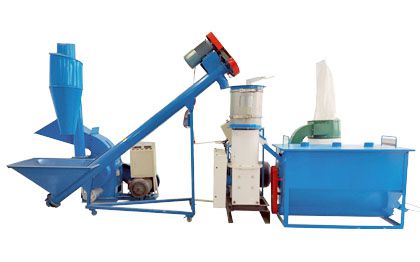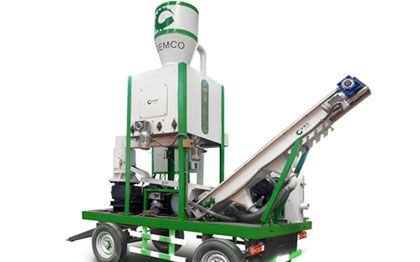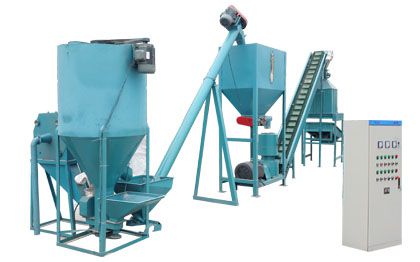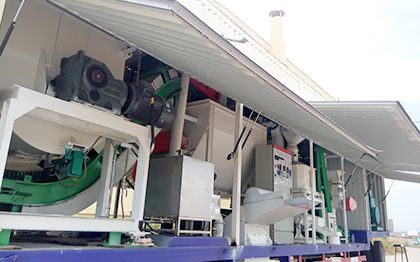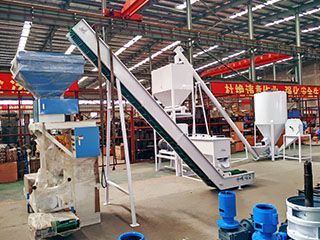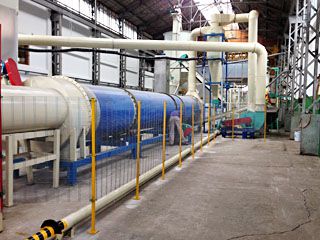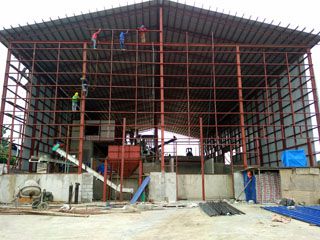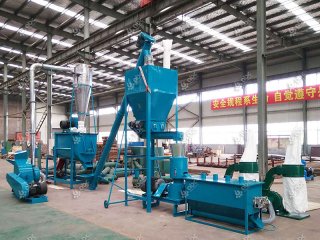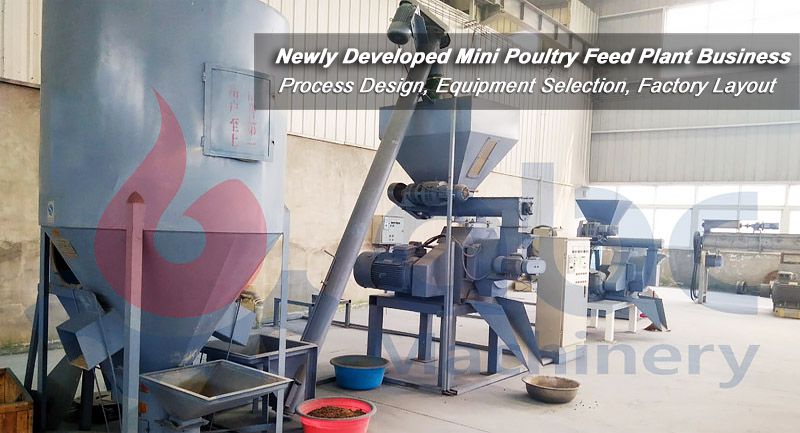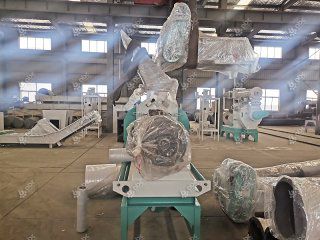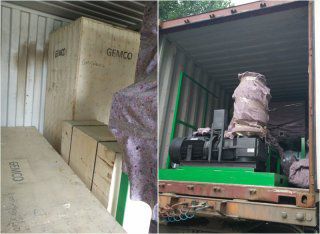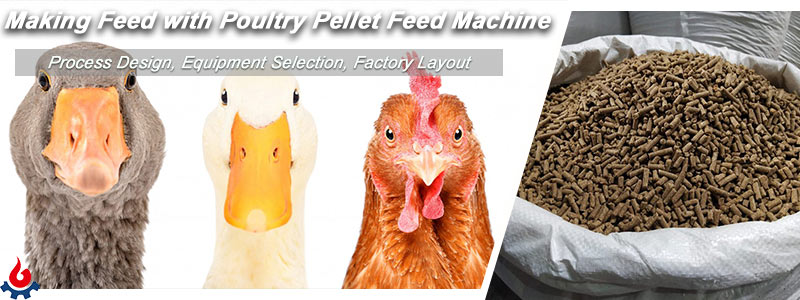
Poultry Pellet Feed Machinery Operating Manual
Advantages of Pellet Feed:
- Balanced Nutrition: Pelleted feed provides precise nutritional balance, and improves animals' health.
- Improved Feed Utilization: The pellet form enhances thorough feed utilization. Compared to traditional feed with a waste rate of over 20%, pellet feed has a waste rate of around 5%.
- Enhanced Growth Benefits: Compared to traditional feed, pellet feed can increase animal growth rates by 15%.
- Reduced Pollution: Pellet feed production and usage generate less waste, reducing environmental pollution by over 50%.
- Consistency Improvement: Pelleted feed ensures uniform particle size, guaranteeing similar nutritional intake each time. Traditional feed can have ingredient variations of up to 10%.
- Lower Disease Spread Risk: Pelleted feed reduces the chance of animals encountering pathogens during ingestion, leading to a 30% decrease in the incidence of infectious diseases.
- Accurate Formulation: The production process allows precise control of each batch's ingredients, achieving a formulation accuracy of up to 98%. (Link to Chicken Feed Formula>>)
How to Use Poultry Pellet Feed Machines Correctly
At present, the pellet feed machine applied in poultry feed processing plants is mainly divided into two categories: Flat Die Feed Pellet Machine and Ring Die Feed Pellet Machine. Feed manufacturers understand the correct use of feed pellet machinery is conducive to safe production and improves product quality. (Link to The Considerations of Making Chicken Feed>>)
- Flat Die Feed Pellet Mill: suitable for small and medium-sized farm households or feed processing retailers, easy to move, easy to use, simple maintenance, less investment, low cost, electromechanical dual-use, etc.
- Ring Die Feed Pellet Mill: suitable for large and medium-sized farms or feed manufacturers, high output, long service life, good degree of automation, good performance of continuous operation, uniform feed quality, low maintenance cost, etc.
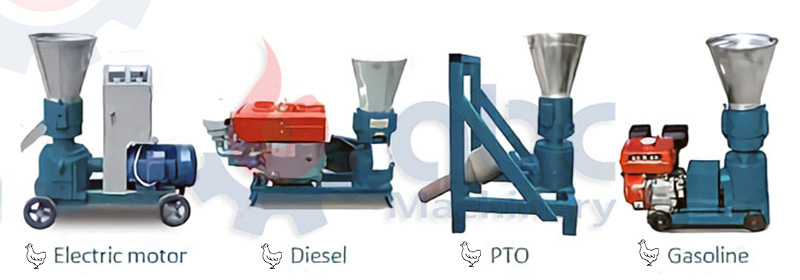
(Flat Die) Small Pellet Feed Making Machine with Different Driver Forces
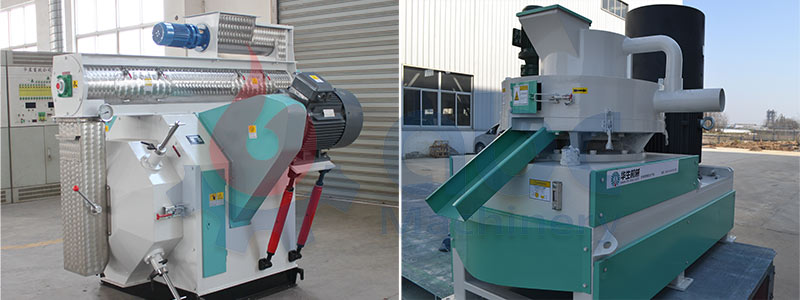
(Ring Die) Large Feed Pellet Making Machine for Sale
If you want to know more about poultry feed making machines, you can contact us. We provide you with excellent low-price animal feed processing machines and professional answers.
Running-in Procedure for Poultry Pellet Feed Machines
Grinding must be carried out reasonably and adequately before the new machine (or replacement of a new set of grinding tools) is used. Most of the molds and pressure wheels of the pellet machine are heat-treated parts, there are many burrs on the inner holes or surfaces, which will affect the effect of pelletizing and yield.
❈ For flat die pellet machines: The general grinding method is to mix 5 kg of bran, 5 kg of engine oil, and 25 kg of fine river sand evenly (soybeans can also be directly extruded) into the starting machine. And before feeding, adjust the gap between the pressing wheel and the template to 0.1~0.3 mm, so that the rotation of the pressing wheel and the template can squeeze out the pellets. After repeated extrusion for 15~40 mins, the raw materials are put into normal production.
❈ For ring die pellet machine: The grinding method is to increase the above data in proportion, use the adjustment plate in the body to adjust the running gap between the ring die and the pressure wheel to 0.1~0.4 mm, and press repeatedly for 30~50 mins before putting into production.
Considerations for Producing Pellets with Poultry Feed Machines
There are many precautions to be taken during the operation of the poultry feed pelletizer, and a few of the more important ones are briefly mentioned here.
- Do not put your hand into the feed opening when the feed pellet maker is working.
- If the animal feed processing machine becomes jammed during operation, stop it immediately. Press the pressure roller to loosen the bolts and then restart the machine.
- Check the tightness of the belt frequently to prevent low output of the feed manufacturing machine, belt slippage, etc.
- It is normal for the poultry feed pelletizing machine to work continuously and the motor heats up to 70 degrees.
- To ensure the quality and output, it is better not to exceed 55% of grass powder content in the feed used in flat die feed pellet maker, and not to exceed 80% of grass powder content in the feed used in ring die feed pellet maker.
- The raw material moisture content of the flat die pelletizer is generally 13~20%, and the ring die is more suitable between 14~25%.
Precautions for Shutting Down Poultry Feed Pellet Making Machines
There are some key tasks to keep in mind when shutting down the poultry feed pellet machine. Toward the end of material pressing, we recommend mixing the proper amount of bran with cooking oil and putting it into the feed processing machine. Stop the machine after 1~2 mins of pressing, this will ensure that the mold holes are filled with oil. This not only helps maintain the molds, but also saves time when turning on the poultry feed pellet making machine next time. After stopping the machine, loosen the press wheel adjustment screw and clean up any residual material. This series of operations is designed to improve the maintenance of the poultry pellet feed machine and to ensure that the next start-up will be smooth feeding and production.
There may be some differences in the operation of different feed pellet makers. It is not possible to list them all here. If you have other questions about the use of animal feed pellet mill, click below to get a free consultation.
Key Performance Indicators for Poultry Pellet Feed Machines
We already understand that feed pellets have many advantages. If we want to fully utilize the advantages of feed pellets, quality feed mills must pay attention to the quality of feed pellets. The production of feed pellets needs to meet some physical specifications in addition to some relevant chemical and nutritional specifications. The following will reveal the poultry pellet feed specifications for you, hope it will help you.

Different Types of Poultry Feed: Mash Feed & Crumble Feed & Pellet Feed
- Hardness of Feed Pellets: Hardness is an indication of how firm the pellets are. It is generally 0.06~0.12 MPa (0.6~1.2 kgf /cm2) depending on the feed species.
- Chalking Rate of Feed Pellets: Generally, it is required that the chalking rate should not be more than 10%, the quality products should not be more than 5%, and the chalking rate is often expressed in terms of firmness. Such a chalking rate of 8% can also be used for a solidity of 92% to express.
- Feed Pellets Moisture: The moisture requirement of finished pellet feed is generally controlled below 12.5%. For the drier environment, the moisture content can be relaxed to ≤13.5%.
- Pellet Feed Diameter: Different animals have different diameter requirements (or particle size requirements) for different feeding periods. The table below provides poultry pellet feed production data for your reference.
|
Feed Animals |
Pellet Diameter (mm) |
|---|---|
|
Poult |
2.5 |
|
Adult Chicken, Baby Chick |
3.0~4.0 |
|
Adult Broiler, Breeder |
5.0 |
|
Laying Hens |
3.0~5.0 |
|
Laying Ducks |
6.0~8.0 |
- Length of Feed Pellet: The Length of the pellet is generally 1.5~2.5 times of the diameter. The length of the chicken feed pellet should be strictly controlled, too long will get stuck in the throat and lead to choking. The opening feed for chicks is generally processed into large pellet feed and then processed into crumble feed by pellet crumbler machines. (Link to Buy Chicken Feed Machines for Production Lines>>)
- Appearance Quality: The surface of the pellet is required to be smooth, uniform in color and particle size, with no obvious cracks and less powder.
ABC Machinery: Your Reliable Partner in Poultry Feed Pellet Production
If you are looking for a poultry feed processing machine or line, I believe ABC Machinery will be your reliable choice. We have exported our machines and complete feed production lines to many countries including the UK, Australia, Canada, Vietnam, Thailand, India, South Africa, etc, with our professional knowledge, high-quality machines, turnkey feed plant and excellent services.
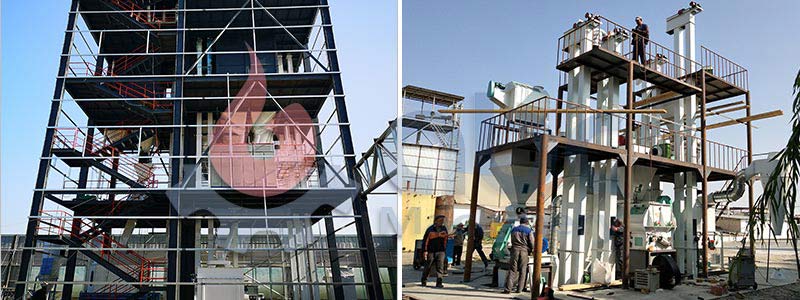
ABC Animal Feed Pellet Processing Plant Projects
Our team is dedicated to providing efficient and intelligent feed production solutions. Our machine processes and production lines are designed to increase productivity, reduce costs and ensure superior quality of the final product. We look forward to being your partner in success. Contact us now below.


